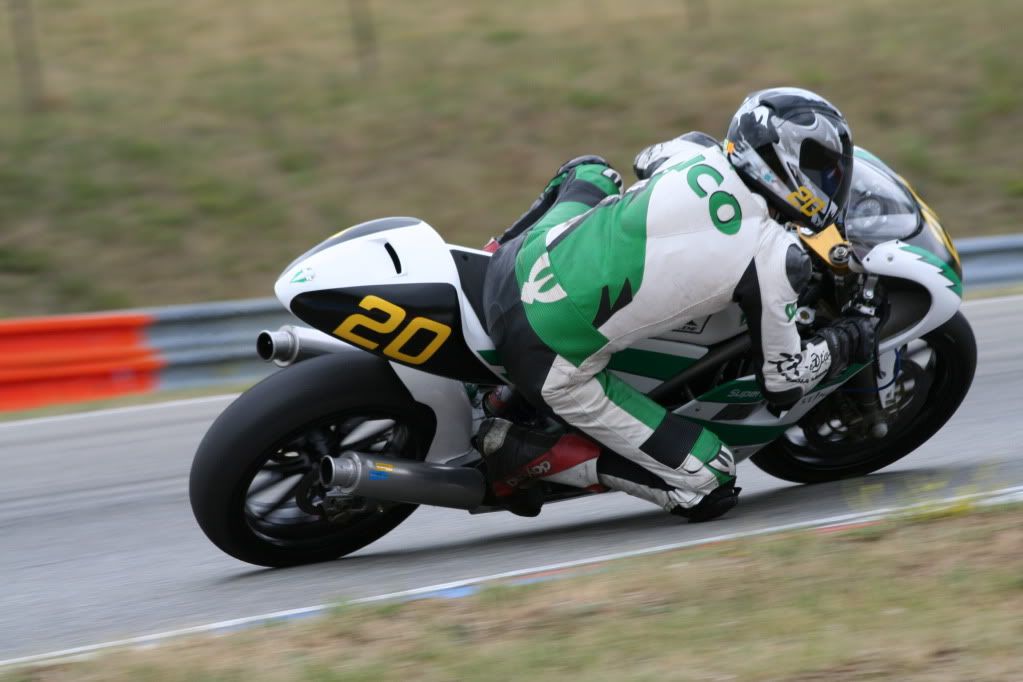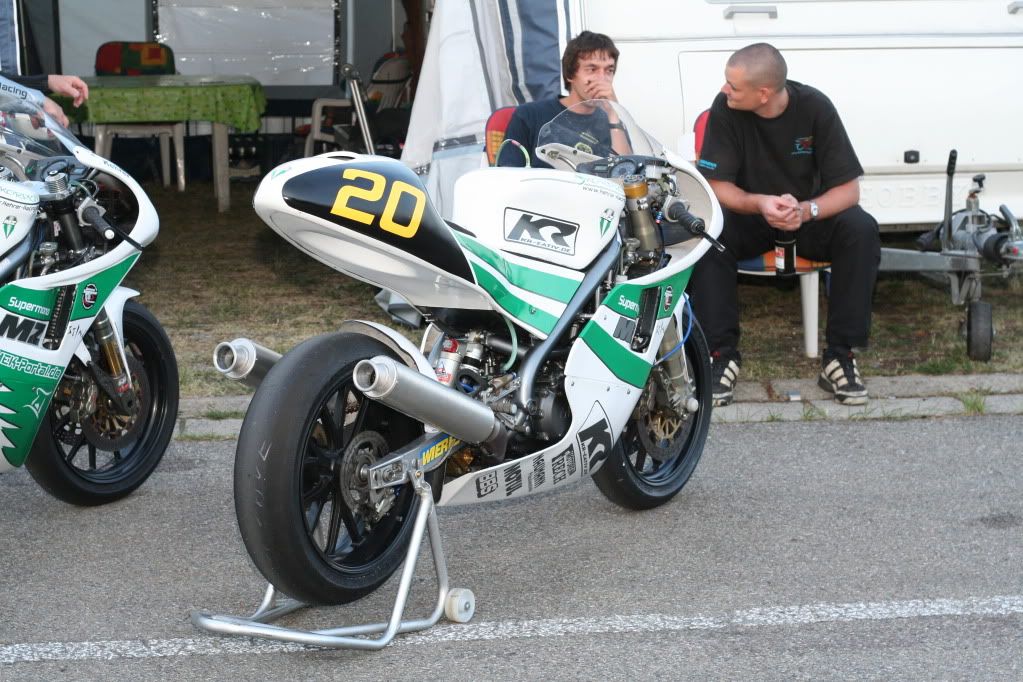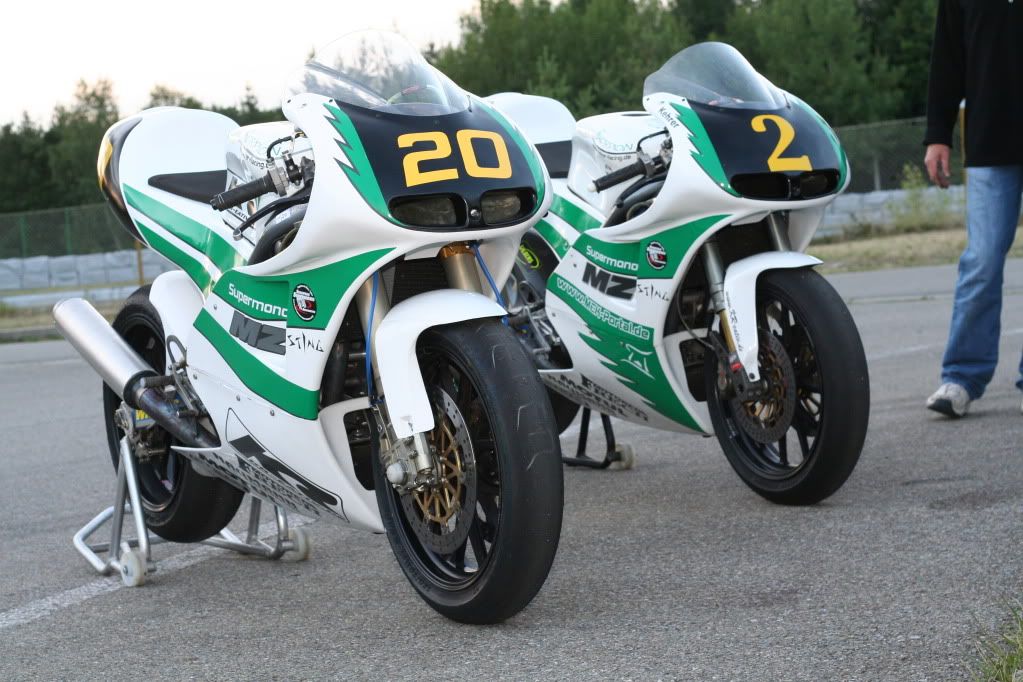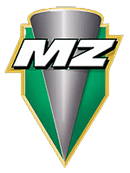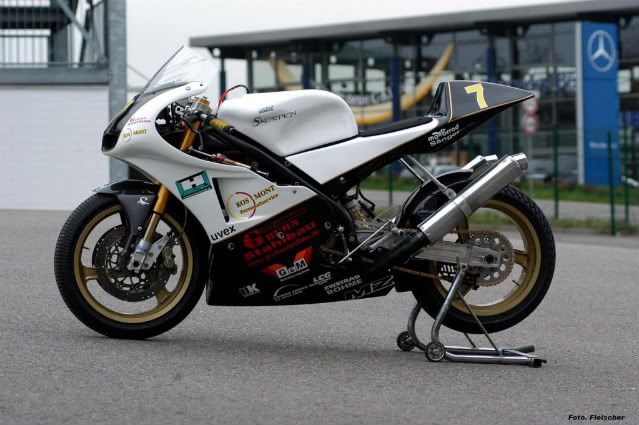probably, no, certianly involves major surgery. Kehrer's Works racers are those of the second group from MZ. Look very closely at the frame.

It only looks like what you have but is quite different. Look where the swingarm axle is or at the welded front cage around the engine. Needless to say that the rear subframe is minimalistic. And there is no oil tank; the frame is the oil tank.
Both Beasley in the US and
MLB here in Germany make (made?) readily obtainable one-piece seat GF cowls that fit the stock seat frame. Google pictures of our own Chris Hunsicker's racer (since sold); it has a Beasley seat.

Much more important in the context of track Skorpions, notice that Chris had
MUCH lighter Brembo TZ250R wheels with a 4,5" rear that can accept decent racing tires. there was also a 5" version but both are a scarce as hen's teeth. They are worth every cent they might cost. I remember Chris reporting to me how he could was able to pass SVs on the straight. Go figure - and that is what I meant recently, when I wrote a step backwords. He was also running Brembo calipers and decent light rearsets which were not somewhere behind the bike and an
expensiveWilbers strut custom-made for him. That at a time when NOTHING was available for the Skorpion. We made these as well as the ones I later used.

Nowadays there is no excuse for running the John-Deere-type footpegs. Gilles Tooling supplies top quality high-end rearsets especially for the Skorpion:


This was my doing, not without Gilles' friendly cooperation and these are the prototypes on my bike. The AS31GT-MZ01 rearsets look just like this and can be had in titanium (here), gold and black. They are expensive up front but all parts are interchangable and can be had separately, making them cheaper at the track and after inevitible spills.
Point is, tho, at least for me: is is all well and good to have a nice looking bike, but, if one is really serious about the track, there are other, far more important matters that have to be attended to first. By that I also mean before one starts off with engine tuning. Right off, get Brembo calipers and pumps (front 13mm, rear 11 or 12) if you value your own safety. This should be requisite for
ANY Skorpion, street or track. Get the chassis right first with decent wheels and strut at the back. Use shorter dogbones, 125mm is a good place to start. If you are able to mark out and drill accurately, make them yourself; 6mm 7075 aluminum is more than strong enuf; I have been running my alu bones for 7 years now. There is nothing hi-tech about dogbones. Get a good programmable ignition like the TCIP4, set the limiter to 9000, program a more usable curve and put on a shorter ratio, obviously depending on the track and use a motorcross racing chain (e.g. DID520ERT) without o-rings. Get usable clipons and throw those crappy uncomfortable originals in the bin. All of this for the street,too, and it will put that street legal Skorpion right up with "big guys" on the hilly roads. If not out front. I know from experience. I nerve those would-bes all the time, them shaking their heads: "hugh? no way, can't be possible." I have actually overheard this.

the last incarnation of my '94 blue Tour, referred to as my "toy," the bike I am talking about here.
under 150kg ready to ride and street legal, too, and with 59hp at the rear wheel. Those Brembo wheels again, etc, etc, etc...
Wanna bet the above racer, as pretty as it is, is a far cry from that...
My racer weighed in at 122kg ready to race with half-fairing, at 125 with full as seen here somewhere. With battery. With magneto it was a bit lighter.
Chris, if he was still here, could testify that it got up and went. He rode it briefly, illegally, on the open road behind the track in the evening.
back to the seats
A member (Carlo) of the
German Skorpion Forum is making CF look-alike parts for the Skorpion. These include front and rear fenders and even a cog cover. I recently had a customer's bike here with these items on it and the fenders looked good. If I remember right, Carlo also made, or was in the process, a RS125type seat and at one tank/seat monocoque. so, unless these were done with styrofoam lost form method, there is a form and possibly more to be had.
And dutch fellow has just yesterday presented a CF tank for the Skorpion, on recessed on the bottom for better conditions for flatslides etc.
You have to register as in any forum, but English is no real problem. several non-Germans write in English.
here pics of that customer's bike where you can sort see the fenders:
This one is also oil-in-frame like two or three more in our forum here:
you can see the return line going to the front of the frame and the feed line at the bottom. Both cross tubes have been drilled from outside and the the holes welded shut again. The frame contains about 3 liters. I am not a fan of this modification and am not advocating it, not with the stock frame.
Here the tank (steel) is from a Cagiva Mito and the GF seat for a classic racer laminated onto the tank to form a unit which is hinged at the front. The seat frame is home made. All the electric is under that small seat including the diminutive LiPeFo battery on the lower lever with large plus and minus connector block to which everything is attached and the battery separately. The starter relay is right next to the main connector poles. On the upper lever, there is the SilentHektik solid-state fuse and blinker box and the Igntech Sparker TCIP4 programmable ignition box. The ignition key is, as on my own bike, under the seat on the right side; it controls +12V to the fuse box only. There are no live wires when the switch is off save for the separate line to the fan which has its own inline fuse. The harness to the front on the left contains only the +12 from the fuse box to the lightswitch (Yamaha with lights on/off, hi/lo, headlight flasher, horn, and blinkers) and DET100 electr. instrument and the +12 from the blinker relay and the line for a shift light from the TCIP4 in case it is needed later. The only lines back in that harness are the right and left blinkers. The taillight is connected directly to the fuse box and is always on when the ignition is on. On the right is a separate harness (as I always do) the +12v from the relay pin of the fuse box to the coil (which after all is on the right!), minus from the ignition box to coil and tach, ground wires from starter button and killswitch to starter relay and relay in the fuse box respect. and +12v to both brakelight switches and of course the return lead to the brake light. In other words, the built-in relay of the fuse box is controlled by the kill switch and turns the ignition, both coil and TCIP4 on and off. The leads from the generator and pickup are a separate cable utilizing the OEM plugs going directly to the plus and minus lugs of that connector block respect. to the TCIP4.
That is all there is as cable harness(es); much simpler than either the MZ or the SZR. Normally I connect the taillight classic style with + as ground, the light itself completely insolated from the frame with rubber mounts as a matter of course. That way, both brakelight switches need only ground; no +12v is necessary and since I habitually use a starter relay that needs only to be grounded, no +12v is necessary at all on that side up front. In this case, the owner had a Diode taillight which cannot work with +12 as ground. After several diode lights and many different bulb lights, I returned to a HELLA taillilght with two separate bulbs really meant for trailors and farm machines. It is all-metal with a rubber seal around the lense and real threaded screws. Since adopting this, I have not had to replace a single bulb.

This was the first and last version of the attempt to civilize the racer to street-legal, here still with MLB fairings, Barker alu subframe and
Pferrer RS500 seat as raced.
that tail light is so bright you need sunglasses behind it. This was 4 years ago, the engine without balancer, the later aircooled engine with much lightened balancer and not a single replacement bulb.
sorry for the length and veering away from topic.
